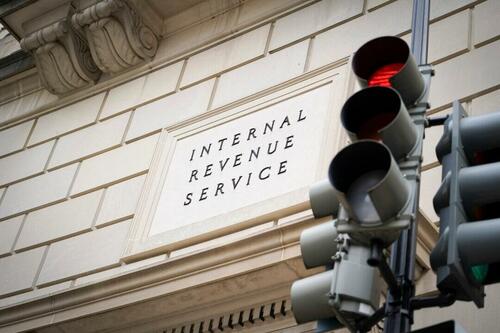Uncategorized
Excessively high rents are a major burden for immigrants in US cities
The US economy relies on immigrants to fill jobs, but many of them are struggling with high rent burdens that make it harder to build productive lives…

Rents across the U.S. have climbed to staggering levels in recent years. Millions of renters spend more than 30% of their income on rent and utilities, a situation that housing experts call being cost burdened.
High rents affect almost all segments of the population but are an especially heavy burden for immigrants, particularly those who have not yet become U.S. citizens. Immigrants, both documented and undocumented, play important roles in the U.S. economy. They often provide the cheapest labor in the riskiest of industries. Yet they are still not broadly accepted or supported in many U.S. cities.
We are geographers who study housing market issues, including racial-ethnic diversity and housing affordability. Our research on Nashville, which has emerged as an immigrant metropolis in the Southern U.S., suggests that foreign-born residents who are not yet citizens are far more burdened by high rents than other groups.
Many immigrant workers in Nashville spend more than 50% of their incomes on rent. This makes it hard for them to afford education and job training, healthy food, health care and other necessities that can help them participate as productive residents. Heavy rent burdens undermine their ability to have a higher standard of living and to be included in mainstream society.
As immigrants increasingly fan out across the U.S., we believe cities receiving new foreign-born residents should anticipate a growing need for affordable housing.
Hard times for renters
The past 15 years have been challenging for renters across the U.S.. In the 2008-09 recession, which was triggered by a collapse in the housing market, millions lost their homes to foreclosure and became renters. Tighter financing made it harder for others to buy homes. By 2015, almost 43 million households had been pushed into renting.
Today about 37% of U.S. homes are occupied by renters. By 2020, almost 46% of U.S. renters paid more than 30% of their household income toward rent. As of June 2021, the median monthly rent in the 50 largest U.S. cities was $1,575 – an 8.1% increase from June 2020.
The heaviest rent burdens fall disproportionately on minorities. Almost 46% of African American-led renter households are rent burdened, compared with 34% of white households.
The COVID-19 pandemic worsened housing insecurity for people of color because of longstanding racially targeted policies and widespread health and economic disparities. Renters of color faced higher cost burdens and eviction rates. In Nashville, this was especially true in Latino and Somali communities.
Why immigrant housing matters
Immigration is the main driver of population growth in the U.S., which is important for filling jobs and boosting tax revenues. After dipping because of pandemic-era restrictions in 2020-22, immigration to the U.S. started growing again, adding 1.1 million new residents in 2023.
Foreign-born residents make up 7.15% of the U.S. population today. Most of these immigrants are not citizens, although more than 878,000 people became citizens in 2023. The median length of time these new citizens spent in the U.S. before becoming naturalized was seven years.
Nashville is the largest metropolis in Tennessee and one of the fastest-growing immigrant gateways in the South. It is home to over 37% of Tennessee’s Latino population and has been a major destination for Latinos and other foreign-born residents since the early 2000s.
For our research, we used census data estimates for 2015-19 from the National Historical Geographic Information System covering metro Nashville’s 13 counties, which contain 372 census tracts. We found that Nashville’s most racially and ethnically diverse neighborhoods had the highest levels of rent burden.
This includes census tracts with high shares of foreign-born residents who are not yet citizens, especially if those residents are Black or Latino. Our analysis of the 37 census tracts (10% of the region’s total) with the largest shares of foreign-born residents who are not yet citizens shows that the average monthly rent paid by a household in these tracts was $1,306.20, compared with $1,288.70 metrowide.
In the 37 tracts with the largest shares of Latino residents and Black residents, we found that about 21% of households spent more than 50% of their household income on rent.
Our findings corroborate other scholarly analyses of Nashville’s Somali refugees, who tend to be clustered in communities that also house other diverse groups, including Egyptians and other African immigrants. In these areas, gentrification and urban renewal have forced several Black and Somali communities from ownership into renting.
We believe specific groups of foreign-born residents may either have been ineligible or didn’t know how to apply for government-funded housing and rental assistance programs and may have had to rent from predatory landlords as a result. Some Muslim immigrants also avoid applying for bank loans because of a concept in Islamic banking called ribā, which views charging interest on loans as unjust and exploitative.
More encouragingly, we found that tracts with newer housing stock, built since 2000, have relatively lower rent burdens even though those tracts are home to many Black and non-Asian minority residents. This suggests that newer development has an important role to play in mitigating rent, especially in suburban, relatively affordable locations. In the 37 census tracts with the most foreign-born residents who are not yet citizens, about 28% of the total housing stock was built in 2000 or later, compared with 23% across Nashville.

Easing rent burdens
One of the best ways to mitigate rent burdens is to build more housing and create affordable housing. However, communities sometimes oppose affordable housing projects and pro-development zoning because of fears of crime, traffic congestion or populations viewed as undesirable. Nashville is not immune to this syndrome.
The cost of housing has been a heated topic in the Nashville region since the mid-2010s. A 2023 Urban Institute report recommended creating more affordable housing in Nashville by promoting partnerships among academic, faith-based and health care institutions that own land that could be developed for housing. And the Metropolitan Council for the Nashville region plans to substantially revamp building codes to promote new housing construction.
However, critics argue that the council gives too much weight to anti-development arguments. And there is little discussion of specific ways to help groups that are ineligible for benefits and assistance that are available to U.S. citizens.

A priority for cities
Our research shows that creating more rental opportunities can help reduce rent burdens for all. We see great potential to take this research further through community-based investigations of local nuances that may add to rent burdens, especially factors and processes that can’t be adequately captured in quantitative data analysis. Many local actors have important roles to play, including elected officials and local nonprofits and community organizations that work to promote rights for immigrants and refugees.
Given the important role that immigrants play in filling jobs and contributing to local economies, we believe that helping them afford housing is a smart strategy, especially for growth-oriented cities.
The authors do not work for, consult, own shares in or receive funding from any company or organization that would benefit from this article, and have disclosed no relevant affiliations beyond their academic appointment.
recession foreclosure pandemic covid-19 housing marketUncategorized
IRS Reveals Suspicious Signs It Looks For To Flag Incorrect Or Fraudulent Tax Credit Claims
IRS Reveals Suspicious Signs It Looks For To Flag Incorrect Or Fraudulent Tax Credit Claims
Authored by Tom Ozimek via The Epoch Times,
The…

Authored by Tom Ozimek via The Epoch Times,
The Internal Revenue Service (IRS) has revealed a series of specific suspicious red flags that could trigger enforcement actions when it comes to mistaken or fraudulent applications for a pandemic-era tax credit.
The IRS indicated in a March 20 notice that there are seven suspicious signs of a bad claim for the employee retention credit (ERC), which is a refundable tax credit designed for businesses that continued paying employees during COVID-19 shutdowns.
The reason the agency is now revealing these telltale signs of incorrect or fraudulent ERC claims is because March 22 is the deadline to apply for a voluntary disclosure program that will let employers who filed bad claims avoid penalties and interest.
Earlier, the IRS found that a large number of improper ERC claims were pushed by predatory promoters on unwitting businesses, with an investigation by the IRS Criminal Investigation (IRS-CI) division uncovering more than $2.8 billion of potentially fraudulent ERC claims.
To fight the wave of dubious ERC claims, the IRS said it had sharply increased compliance action through audits and criminal investigations, with more planned in the future.
However, because of the sheer number of wrongly filed ERC claims and the predatory promotions surrounding them, the IRS developed several ways to get taxpayers who incorrectly claimed the credit to pay it back with minimal penalty.
One of these is the voluntary disclosure program, which lets people who filed bad ERC claims come forward to the IRS and, in exchange for being forthcoming, they only have to pay back 80 percent of what they owe.
Another is a special claim withdrawal process, which lets businesses that filed a questionable claim to withdraw it and avoid the risk of getting an illegal refund that could prove costly.
Generally, anyone who improperly claims the ERC must pay it back, possibly with penalties and interest. The IRS has warned that a business or tax-exempt group could find itself in a much worse cash position if it has to pay back a bad claim than if it had never claimed it in the first place.
The IRS says its latest disclosure of seven warning signs of a bad ERC claim is meant to help businesses review if their claim is questionable and so give them the opportunity to take action by the March 22 deadline.
7 Bad Claim Red Flags
The first warning sign of a potentially bad ERC claim is that it’s claimed for all quarters for which it was available.
Some promoters who pushed employers to file ERC claims advised them to claim the credit for all available quarters, which may not align with eligibility criteria.
“Qualifying for all quarters is uncommon,” the IRS said in the notice, while urging businesses to carefully review their eligibility for each quarter if they want to make sure they don’t fall afoul of the law.
The second red flag that could alert the IRS to a potentially fraudulent or incorrect claim is that it was filed when there was no government order in place that fully or partially suspended the operations of the business claiming the credit.
Some promoters told businesses that they could claim the ERC when any government order was in place in their area, even one that didn’t require the employer to partially or fully suspend its operations.
“This is false,” the IRS said in the notice.
Eligibility for the ERC was limited to periods during which a COVID-19-related order (not guidance or recommendation) was in effect that fully or partially suspended a given employer’s operations.
The third suspicious sign was claiming the ERC for all wages paid to every employee on the payroll.
There were dollar limits and varying ERC amounts, with employers being required to meet certain regulations for wages to be considered qualified wages for a proper claim.
Employers who used the same credit amount across multiple tax periods for each employee is a standout red flag, the IRS says.
The fourth warning sign is claiming a credit solely based on supply chain disruption.
“A supply chain disruption by itself doesn’t qualify an employer for ERC,” the IRS says.
The fifth red flag is employers claiming a credit for the entire calendar quarter when operations were suspended for only part of that quarter.
“It’s possible, but uncommon, for an employer to qualify for ERC for the entire calendar quarter,” the IRS says.
If a pandemic-related government order suspended business operations for part of a given quarter, then the ERC cannot be legitimately claimed for the whole quarter.
The sixth warning sign is that a business that claimed the ERC didn’t employ anyone for part or all of the period for which they’re claiming it.
“Some taxpayers claimed the ERC but records available to the IRS show they didn’t have any employees,” the IRS said. “Others have claimed ERC for tax periods before they even had an employer identification number with the IRS, meaning the business didn’t exist during the eligibility period.”
The seventh red flag for businesses that should alert them that their ERC claim could be bad is if promoters told them that they had “nothing to lose” by filing one.
“Businesses that incorrectly claim the ERC risk repayment, penalties, interest, audit and other expenses,” the IRS says.
The ERC, which is somewhat complex, is available to employers, not individual taxpayers.
Since the program was enacted, over 3.6 million claims have come in, with the IRS saying that ERC-related fraud became worse over time.
Voluntary Disclosure Program
The IRS’s voluntary disclosure program, first unveiled in December 2023, lets employers who wrongly filed for the ERC get right with the tax authorities by admitting to the mistake.
In exchange for volunteering this information, businesses get to keep 20 percent of the incorrectly received credits, and they won’t be charged any interest or penalties on the remaining 80 percent that they repay.
Those that are unable to repay the 80 percent can potentially be approved for an installment agreement, which will let them pay it back over a longer period.
Program applicants must not be under criminal investigation, nor be under an IRS employment tax examination, nor can they have received an IRS notice and demand for repayment of the ERC.
The IRS is also using the program to get at unscrupulous promoters who used aggressive marketing techniques to lure businesses into wrongly claiming the ERC.
In order to qualify for the program, employers must provide the IRS with the names, addresses, and telephone numbers of any advisers or tax preparers who advised or assisted with the claims.
The deadline to apply for the voluntary disclosure program is March 22, 2024.
Interest on money owed to the IRS compounds daily and the failure-to-pay penalty accrues monthly and can rise to as much as 25 percent of the owed amount.
Withdrawal Program
Another program the IRS rolled out in October 2023 was a special withdrawal process that lets businesses that filed a questionable claim withdraw it and avoid the risk of costly penalties and interest.
The withdrawal option lets employers avoid future problems by withdrawing pending ERC claims if they suspect they may have been tricked into filing and have not yet been paid.
Even if a business has received the ERC refund check but hasn’t yet cashed or deposited it, it can still withdraw its claim.
Claims that are withdrawn will be treated by the IRS as if they were never filed, and the agency won’t impose penalties or interest.
Uncategorized
Chapter 11, 7 bankruptcy filings claim more beer, brewery brands
It has been a dark time for beer bands and another well-liked brewery appears to be done for good.

It has been a dark period for beer drinkers. First, the Bud Light controversy made beer drinking — something most people associate with fun — political. That has been followed by a general downturn in beer drinking, especially among younger drinkers.
It's not that nobody drinks beer, but the alcoholic beverage has been fighting a number of trends. Hard seltzer and canned cocktails have seen their market share grow significantly.
Related: Iconic retail chain closing roughly half its stores
That has included major players, including Coca-Cola (KO) , entering the market offering a boozy version of its Topo Chico seltzer and partnering with Brown Forman (BFA) to bring Jack Daniels and Coke to market in ready-to-drink (RTD) cans. Shelves have gotten crowded with options that are not beer, which seems to appeal to younger drinkers.
In addition, beer companies have also suffered from a declining market. That's something the Beer Marketing Industry (BMI) shared in its annual report on the state of the industry.
"The report reveals that beer shipments have fallen by 5% in the first three quarters of 2023, and were on track to fall below 200 million barrels for the whole year. As a result, this would be the lowest level of beer consumption in the USA since 1999, and against a 23% population growth since the turn of the Millennium," The Drinks Business reported.
Image source: Shutterstock
Another brewery appears to be gone for good
The downturn in beer sales, along with debt caused by the covid pandemic, has caused a massive problem for the craft beer business. A number of local and regional breweries have shut their doors because they can't service the debt they had to take on when they were shut down for months during the pandemic.
Casualties have included huge names, including San Francisco's Anchor Brewing, a nationally known brewery. A number of other regional favorites of varying sizes, including Chicago’s Metropolitan Brewing, New Jersey’s Flying Fish, Denver’s Joyride Brewing, Tampa’s Zydeco Brew Werks, and Cleveland’s Terrestrial Brewing, have also filed for bankruptcy.
It's a sort of beerpocalypse that does not appear to be slowing down as another regional favorite brewery, 7 Mile Brewery of Rio Grande, NJ has filed for Chapter 11 bankruptcy protection. The company, which closed in May, filed for bankruptcy in late -February.
The company did share a goodbye on its Facebook page after its last day of operations in May.
"Well that’s a wrap. Thank you to all that came out this weekend to support us. Thank you to all of you for sharing your memories and sending well wishes. We will miss you all. We would also like to thank all our amazing employees through the years. 7 Mile Brewery was all because of you," the company shared.
7 Mile finally files Chapter 11 bankruptcy
It remains unclear why 7 Mile Brewery waited this long to file as it did not appear to be working toward a plan to reopen. The company reported liabilities of $601,000 and assets of $135,000, which is mainly in brewing equipment.
Filing for Chapter 11 bankruptcy protection might allow the company's owners to work out a plan to keep that equipment. That could, in theory, allow them to open in another location or brew beer to sell to wholesalers.
A local radio station, 92.3 The Buzz shared what it believes to be the reason for the filing.
"The craft brewer closed down its operation in May 2023 but has gone to court seeking protection after landlord threats of on-site auctions to sell the property outright.
7 Mile and the other breweries named above are not the only beer brands and breweries that have gone bankrupt and, in many cases, closed their doors.
Deadwords and Persimmon Hollow, two Florida breweries also filed for Chapter 11 bankruptcy earlier this year. Both of those beer brands are trying to stay open.
Forgotten Boardwalk Brewing in New Jersey was not as lucky, having closed down in February. That was the same fate met by The Alementary Brewing Co., another New Jersey brewery which closed after a bankruptcy filing.
In addition, franchise retail chain Craft Beer Cellar filed for Chapter 7 bankruptcy to liquidate its assets, after suffering from financial distress and failing to sell its business.
bankruptcy pandemic
Uncategorized
The relentless growth of U.S. government debt
I was very lucky to attend the Harvard Business School Owner/ Presidents Management program over the three years to 2006. In my class of 100 mature–age…


I was very lucky to attend the Harvard Business School Owner/ Presidents Management program over the three years to 2006. In my class of 100 mature–age students, around half were from the U.S., and the remainder were from several other countries. I know it is a gross generalisation, but it would be fair to say the U.S. students excelled at any “marketing” related case studies but noticeably under-performed in any case studies related to “accounting”.
It is with that backdrop that I thought it worthwhile analysing the data released from the U.S. Treasury, post the release last week for the month of February, and the fiscal year to date being the five months to February 2024. In short, the data, on an annualised basis, is showing a budget deficit of U.S.$2.0 trillion (which exceeds 8 per cent of gross domestic product (GDP) of U.S.$24.6 trillion), whilst the interest expense component of that deficit is running at U.S.$840 billion, or 42 per cent of the annualised budget deficit.

The U.S. Government Debt is now expected to hit U.S.$35.5 trillion at the end of the fiscal year (30 September 2024), around 144 per cent of GDP, and the trouble is this indebtedness is forecast to grow at a much faster rate than GDP over the medium-term.
The graph above illustrates a 10.4-fold increase in U.S. public debt over 33 years to 2023, with an average annual growth rate exceeding 7 per cent. While various governments may blame COVID-19, the cost of defence, demographics, health, welfare, or net migration, neither U.S. political party has striven for a budget surplus over the past 25 years. The problem associated with the increasing level of government indebtedness means any budget deficit will be starting the new fiscal year at close to U.S.$1 trillion in the red (or around 4 per cent of GDP), assuming reasonably steady interest rates.
Dissipating confidence in the U.S. dollar may be one of the reasons gold and bitcoin are challenging their record highs. And at some stage, “the market” may demand a higher premium over the level of inflationary expectations when lending the U.S. government funds. If the confidence level in U.S. bonds eventually comes under pressure, so logically, there will be many asset valuations.
bonds covid-19 bitcoin gold-

 Spread & Containment2 weeks ago
Spread & Containment2 weeks agoIFM’s Hat Trick and Reflections On Option-To-Buy M&A
-

 Uncategorized1 month ago
Uncategorized1 month agoAll Of The Elements Are In Place For An Economic Crisis Of Staggering Proportions
-

 International2 weeks ago
International2 weeks agoEyePoint poaches medical chief from Apellis; Sandoz CFO, longtime BioNTech exec to retire
-

 Uncategorized1 month ago
Uncategorized1 month agoApparel Retailer Express Moving Toward Bankruptcy
-

 International2 weeks ago
International2 weeks agoWalmart launches clever answer to Target’s new membership program
-

 International3 days ago
International3 days agoParexel CEO to retire; CAR-T maker AffyImmune promotes business leader to chief executive
-

 Uncategorized1 month ago
Uncategorized1 month agoGOP Efforts To Shore Up Election Security In Swing States Face Challenges
-

 Uncategorized4 weeks ago
Uncategorized4 weeks agoKey Events This Week: All Eyes On Core PCE Amid Deluge Of Fed Speakers









